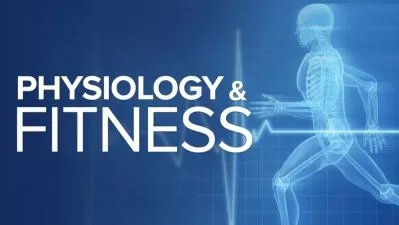Introduction to Optical Eye Modeling with Zemax
4:35:11
Description
Master Eye Optics with Zemax: Geometrical Optics, Aberrations, Eye Modeling, and Performance Optimization
What You'll Learn?
- Simulate the optical components of the eye using Zemax software to understand how light interacts with the cornea and lens.
- Analyzing Optical Performance: Teach methods for evaluating the performance of eye models in Zemax.
- Customizing Eye Models: Guide students in customizing eye models to fit various optical scenarios.
- Compare different optical materials used in eye model simulations and assess their impact on image quality and aberration control.
- Assess the impact of lens parameters on the overall optical system performance through Zemax simulations and optimization techniques.
- Identify the anatomical structure of the human eye, including the cornea, lens, retina, and other key components.
- Explain the function of each part of the eye in the process of vision, focusing on how light is refracted and focused.
- Describe the variations in the refractive index of different parts of the eye and their roles in image formation.
- Model the eye's refractive surfaces, such as the cornea and lens, using both theoretical knowledge and Zemax simulations.
- Analyze common optical aberrations in the eye, such as spherical and chromatic aberration, and their effects on vision.
- Apply the knowledge of eye anatomy and refractive properties to design optical systems that mimic or interact with human vision.
Who is this for?
What You Need to Know?
More details
DescriptionThis comprehensive course, "Introduction to Optical Eye Modeling with Zemax," is meticulously designed for optical engineers, researchers, and professionals working in areas such as retinal imaging, AR/VR optics, and other vision-related technologies. The course equips learners with a profound understanding of both the theoretical foundations of optical systems and their practical implementation in Zemax OpticStudio.
The course begins by covering the essential principles of geometrical optics, including the laws of reflection and refraction, thin lenses, focal length, optical power, and image formation. Learners will also explore critical concepts such as dispersion, the Abbe number, and nasal-temporal distinctions. A thorough treatment of aberration theory follows, with a focus on both monochromatic and chromatic aberrations, including defocus, spherical aberration, coma, and astigmatism.
A significant portion of the course is dedicated to modeling the human eye as an optical system. Students will delve into the detailed anatomy and optical properties of the cornea, including its refractive index, power, and asphericity, as well as the crystalline lens, with an emphasis on thickness, curvature, and refractive index distribution. The course also covers accommodation of the eye, including a practical example of calculating the amplitude of accommodation.
Utilizing Zemax OpticStudio, students will build a paraxial schematic eye model and the more advanced Liou and Brennan schematic eye model. Participants will gain hands-on experience in simulating and analyzing optical performance, detecting aberrations, and optimizing lens designs for enhanced results. Practical exercises, including the design of a singlet lens and the modeling of the Navarro 1985 accommodated eye, are incorporated to deepen the learners’ practical skills.
By the end of the course, participants will have a solid foundation in both the theoretical and practical aspects of optical eye modeling and will be fully equipped to apply these skills to complex optical systems. This course is ideal for those seeking to master Zemax OpticStudio in the context of advanced optical modeling and simulation.
Who this course is for:
- Optics Enthusiasts: Individuals with a background in optics who want to perform simulations of eye optical models using Zemax.
- Ophthalmologists and Eye Care Professionals: Those with a strong understanding of eye optical systems looking to enhance their skills with Zemax for precise simulations.
- Optical System Designers: Engineers and designers working on devices that involve human vision, such as AR/VR headsets, microscopes, telescopes, and riflescopes, where integrating the eye's optical system is crucial.
- Medical Device Developers: Professionals designing optical systems for examining the eye, such as fundus imaging devices, aiming to improve diagnostic capabilities.
- Research Scientists: Researchers focused on eye optics and vision science who wish to use Zemax for detailed and accurate simulations.
- Academic Instructors: Educators seeking to incorporate practical simulation techniques into their curriculum for optics and ophthalmology students.
- Innovation Teams: Teams working on cutting-edge technology that requires precise modeling of the human eye's optical components for enhanced functionality.
This comprehensive course, "Introduction to Optical Eye Modeling with Zemax," is meticulously designed for optical engineers, researchers, and professionals working in areas such as retinal imaging, AR/VR optics, and other vision-related technologies. The course equips learners with a profound understanding of both the theoretical foundations of optical systems and their practical implementation in Zemax OpticStudio.
The course begins by covering the essential principles of geometrical optics, including the laws of reflection and refraction, thin lenses, focal length, optical power, and image formation. Learners will also explore critical concepts such as dispersion, the Abbe number, and nasal-temporal distinctions. A thorough treatment of aberration theory follows, with a focus on both monochromatic and chromatic aberrations, including defocus, spherical aberration, coma, and astigmatism.
A significant portion of the course is dedicated to modeling the human eye as an optical system. Students will delve into the detailed anatomy and optical properties of the cornea, including its refractive index, power, and asphericity, as well as the crystalline lens, with an emphasis on thickness, curvature, and refractive index distribution. The course also covers accommodation of the eye, including a practical example of calculating the amplitude of accommodation.
Utilizing Zemax OpticStudio, students will build a paraxial schematic eye model and the more advanced Liou and Brennan schematic eye model. Participants will gain hands-on experience in simulating and analyzing optical performance, detecting aberrations, and optimizing lens designs for enhanced results. Practical exercises, including the design of a singlet lens and the modeling of the Navarro 1985 accommodated eye, are incorporated to deepen the learners’ practical skills.
By the end of the course, participants will have a solid foundation in both the theoretical and practical aspects of optical eye modeling and will be fully equipped to apply these skills to complex optical systems. This course is ideal for those seeking to master Zemax OpticStudio in the context of advanced optical modeling and simulation.
Who this course is for:
- Optics Enthusiasts: Individuals with a background in optics who want to perform simulations of eye optical models using Zemax.
- Ophthalmologists and Eye Care Professionals: Those with a strong understanding of eye optical systems looking to enhance their skills with Zemax for precise simulations.
- Optical System Designers: Engineers and designers working on devices that involve human vision, such as AR/VR headsets, microscopes, telescopes, and riflescopes, where integrating the eye's optical system is crucial.
- Medical Device Developers: Professionals designing optical systems for examining the eye, such as fundus imaging devices, aiming to improve diagnostic capabilities.
- Research Scientists: Researchers focused on eye optics and vision science who wish to use Zemax for detailed and accurate simulations.
- Academic Instructors: Educators seeking to incorporate practical simulation techniques into their curriculum for optics and ophthalmology students.
- Innovation Teams: Teams working on cutting-edge technology that requires precise modeling of the human eye's optical components for enhanced functionality.
User Reviews
Rating

Udemy
View courses Udemy- language english
- Training sessions 78
- duration 4:35:11
- Release Date 2025/01/24










